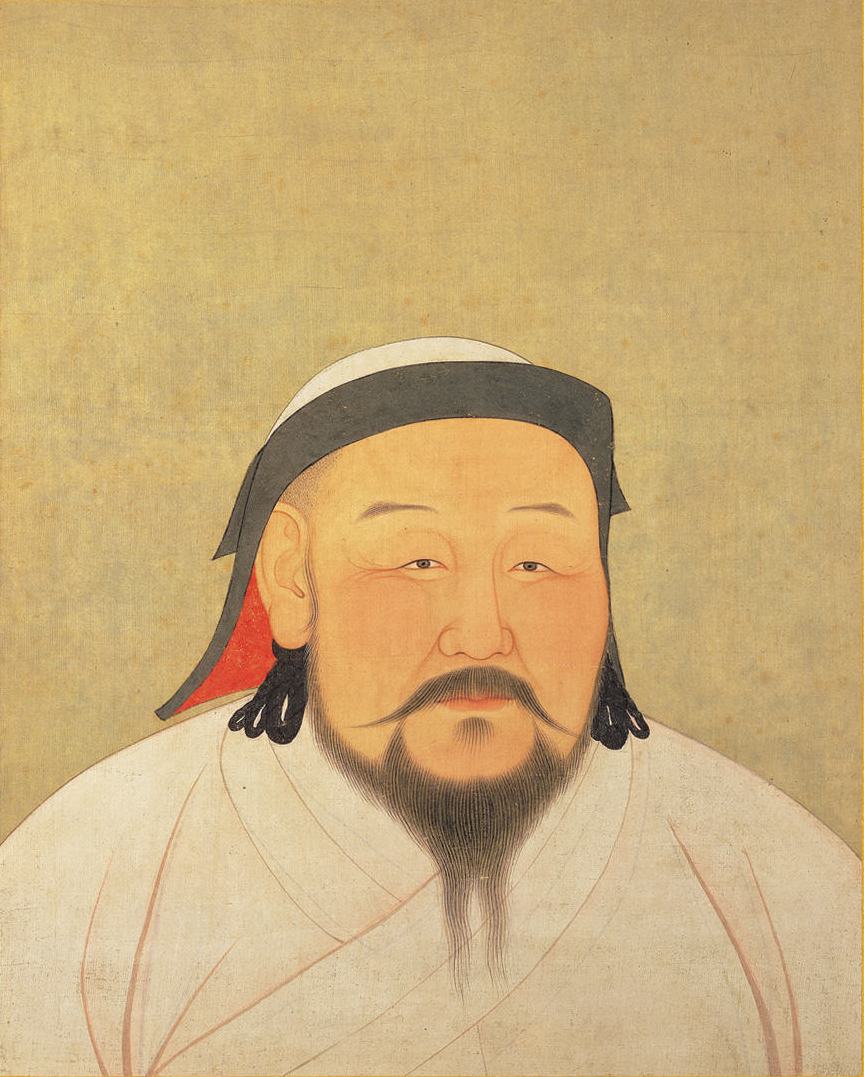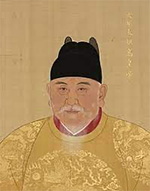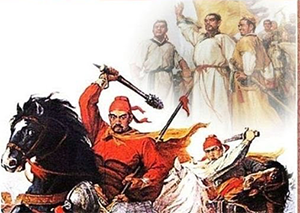China's Yuan Dynasty
The Yuan Dynasty was a period of foreign rule over China that lasted nearly a century during the Middle Ages. 
Kublai Khan, grandson of the famous Mongol warrior Genghis Khan, proclaimed the Yuan Dynasty in 1271. By that time, the Mongols controlled much land that had traditionally been part of China. Ruling the Middle Kingdom at that time were the Song (which by this time had become the Southern Song). With the help of a strong number of Song defectors, Yuan forces captured Hangzhou, the Song capital, in 1276 and forced Song Emperor Gong to surrender. A Song force resisted for a few more years before Yuan forces triumphed supremely, at the Battle of Yamen, in 1279. The Mongols had come from the north, conquering first the Liao, the Western Xia, and then the Great Jin, the latter with the help of Song China. All of that conquest predated Kublai's ascension as Khan; that occurred in 1260. 
When the Mongols then conquered the Song in 1279, Kublai Khan went out of his way to keep as much of Chinese culture in the new Yuan Dynasty as he could. He named Dadu (now Beijing) as the capital. He also had another capital city, the more famous Xanadu, which served as the summer capital. During his reign, Kublai Khan promoted economic growth by encouraging building projects, of roads and buildings and canals, bolstering an already strong internal transport system. He created a central currency, called Chao; it was made of paper. Science was a priority as well. Scientists introduced new instruments and recorded many astronomical observations. Mapmakers produced accurate maps of the Silk Road and all of the countries through which it ran. Modern learnings in medicine and surgery spread throughout the Mongol Empire. 
Kublai Khan ordered the creation of a new Mongol alphabet. It looked a lot like Chinese. Religious tolerance was the order of the day. Buddhism was very popular, of course, but people were not discouraged from or punished for practicing other religions. In fact, many of Khan's top scientists were Muslim. Class was a different matter, however. Under Kublai Khan, the Mongol Empire stipulated four classes of people:

One of Kublai Khan's failures was in attempting to conquer lands to the south and islands to the east. Two separate times, in 1274 and 1280, the Khan sent a huge invasion force to invade Japan. Both actions resulted in no new Mongol territory and tremendous losses for Khan's forces. These invasions were both wrecked by freak storms. This is the origin of the Japanese word kamikaze, which means, roughly, "divine wind." Invasions of Southeast Asia resulted in little gain as well. Kublai Khan was the most famous of the Yuan Dynasty rulers, but he was by no means the only one. When he died, in 1294, he passed the throne to a series of descendants, including two grandsons, a series of nephews, and even great-grandsons and great-nephews. 
The first few successors to the great Kublai did more harm overall than good, but Buyantu Khan, the fourth Yuan emperor, put China back on track, starting by reintroducing the Confucius-based civil service examinations that were so popular with previous Chinese dynasties and that Kublai Khan had banned. Buyantu Khan, ruling in the early 14th Century, introduced a series of other reforms that resulted in prosperity, and he encouraged the translation and dissemination of many Chinese books, helping to pacify the population. He and subsequent rulers increased international trade, focusing intently on exporting porcelain and silk. Following him were a series of short-ruling Khans, the last of which was Toghon Temur, who took the throne in 1333 and kept it until 1368. He was, in fact, the last ruler of the Yuan Dynasty. 
Rulers since Kublai, more or less, had taken on more and more of the trappings of Chinese society, not only to to endear the Chinese population to their foreign-originating rulers but also to strengthen a claim of legitimacy for that rule. As a result, Mongols who were not in Yuan China saw the Yuan rulers as growing further and further from their roots. At the same time, a great many Chinese people resented the Yuan rulers for their "occupation"; this resulted in a number of uprisings throughout the 91 years of Yuan rule. Natural disasters played a part in the Yuan downfall as well. A number of bad harvests resulted in famine; a seesaw combination of droughts and severe flooding further eroded the people's confidence in the government. Later rulers didn't help things by trying to solve economic problems by printing more paper money. (The result was a severe devaluation of the currency.) All of that ill will crystallized into a rebellion that eventually spread throughout the empire. The Red Turban Rebellion, a militant offshoot of the Buddhism-inspired White Lotus movement, began in 1351. It was so called because its members wore red turbans and waved red banners to rally people to their cause. A number of Song loyalists, 
One of most well-known leaders of the Red Turban movement was Zhu Yuanzhang, a former Buddhist monk and White Lotus supporter who rose to prominence through a combination of battlefield success and political astuteness: he married the daughter of a powerful opposition warlord. The Red Turban Rebellion had multiple factions, and Zhu eventually dispatched all of the other leaders, leaving himself free to declare himself the Hongwu Emperor, head of the new Ming Dynasty, in 1368. Although that declaration came in that year, it wasn't until the following year that Ming forces captured Dadu, the Yuan capital, and solidified the rule of the new dynasty. |
|



 emboldened by the perceived weakness of the Khan, gained favor quickly for a reinstatement of Song rule; a few even declared a Song restoration, in an occupation of the previous Song capital, Kaifeng. Discontent continued throughout the land, as members of the resistance fought in a number of battles against government armies.
emboldened by the perceived weakness of the Khan, gained favor quickly for a reinstatement of Song rule; a few even declared a Song restoration, in an occupation of the previous Song capital, Kaifeng. Discontent continued throughout the land, as members of the resistance fought in a number of battles against government armies.
